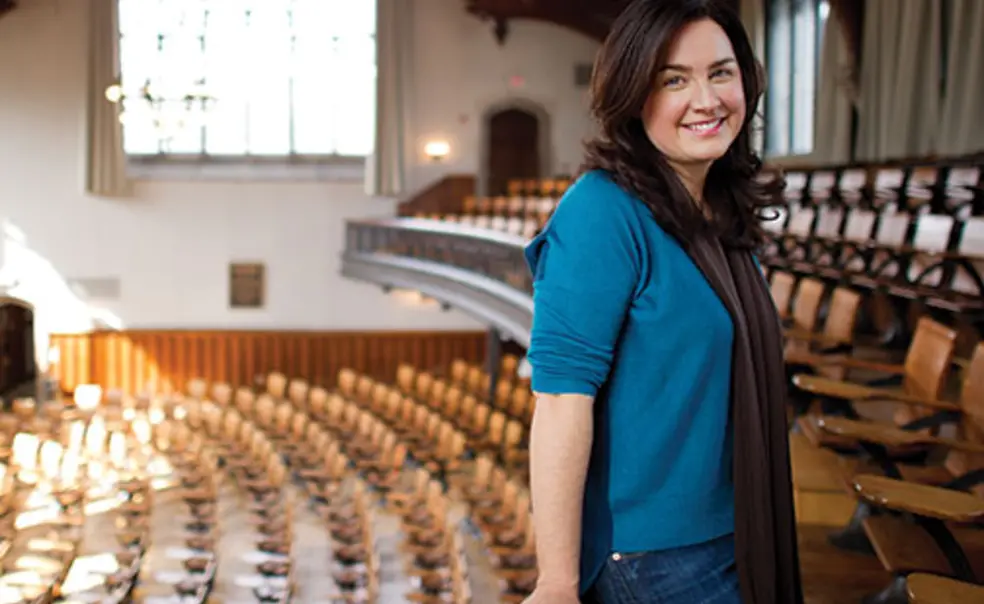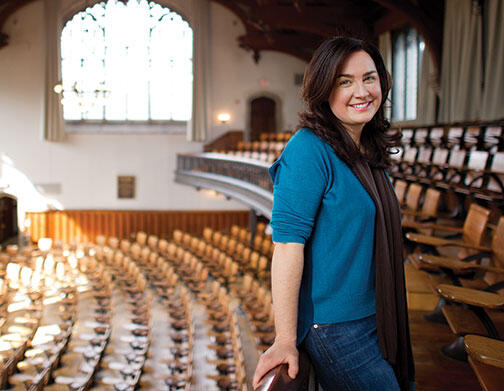Musical Theater: Danger as Well as Joy
Musical theater expresses our struggles for community, says Tamsen Wolff
The halls are alive with the sound of music — the halls of McCosh, that is. That’s where Professor Tamsen Wolff teaches a course on the history of American musical theater. Unsurprisingly, her students tend to be avid fans of the form, and thus prone to breaking into song.
“When I go around the room and ask people to just sing a snatch of anything they love, almost everybody will — and they’re not singers!” says Wolff, whose affection for musical theater bloomed from backyard performances of My Fair Lady at age 9. Wolff has directed several plays at McCarter Theatre and worked as a dramaturge, analyzing a play’s dramatic composition.
She enjoys examining musical theater as an academic, though to some it may not seem worthy of serious study. For Wolff, a professor of English, musical theater is “our most American art form” and a means of exploring the history of the United States — specifically, how communities come together and at what cost. Most people go to the theater because it makes them happy, but musicals, she says, are as much about danger as they are about joy.
On the stage, singers unite to form the chorus, and dancers perform in sync. The performance itself is an example of those on stage joining with audience members in a shared experience, Wolff says. But many musicals convey the dark side of community. In Oklahoma!, when the romance between the two central characters is threatened by a farmhand, he is killed and his death is “swept under the rug,” Wolff points out. The musical moves on to a happy song-and-dance number, and the couple ride away. The story line endorses the sacrifice of an individual for the benefit of the community, Wolff says.
West Side Story, produced in 1957, was the first musical focused on “society’s outsiders who want in, as opposed to social insiders solidifying their base,” says Wolff. Notably, the lovers from warring gangs fail to remain together and the gangs form only a tenuous truce, challenging the musical convention that groups find unity onstage through singing and dancing.
By the time Stephen Sondheim’s Assassins had come to the stage in 1990, violence had moved to the forefront of musicals. Various real-life figures, such as Lee Harvey Oswald, arrive at a murderous carnival, and are invited to step up and solve all their problems by shooting a president. The assassins are social misfits who see fame and celebrity as the route to social inclusion, even if it’s achieved through an act of profound violence.
Wolff says the evolution of violence in musicals — from peripheral events that are overshadowed by singing and dancing to the central driver of the action — encapsulates the story of America, a nation that has struggled profoundly with questions of division and unity. “Watching and participating in musicals is often as much or more about thrill or danger,” Wolff says, “as it is an opportunity for uplift or cheer.”













No responses yet